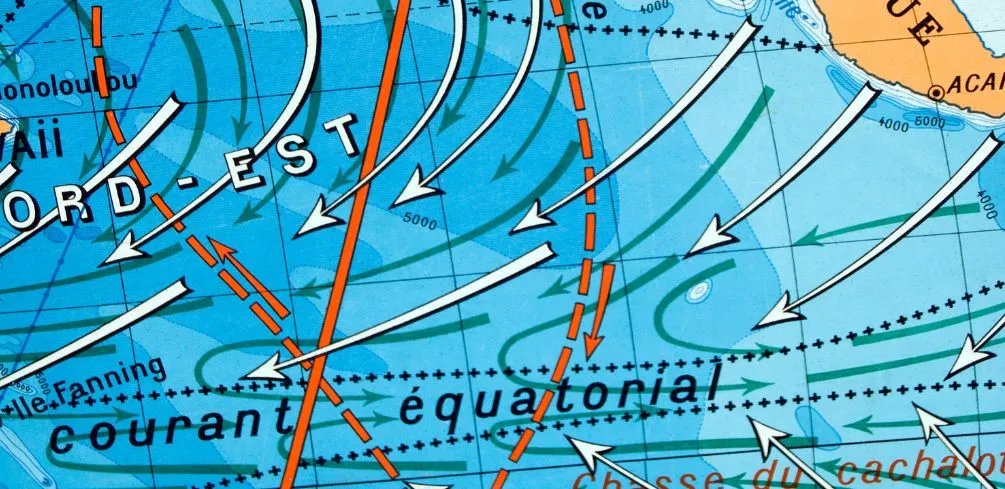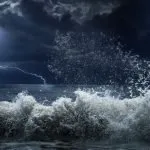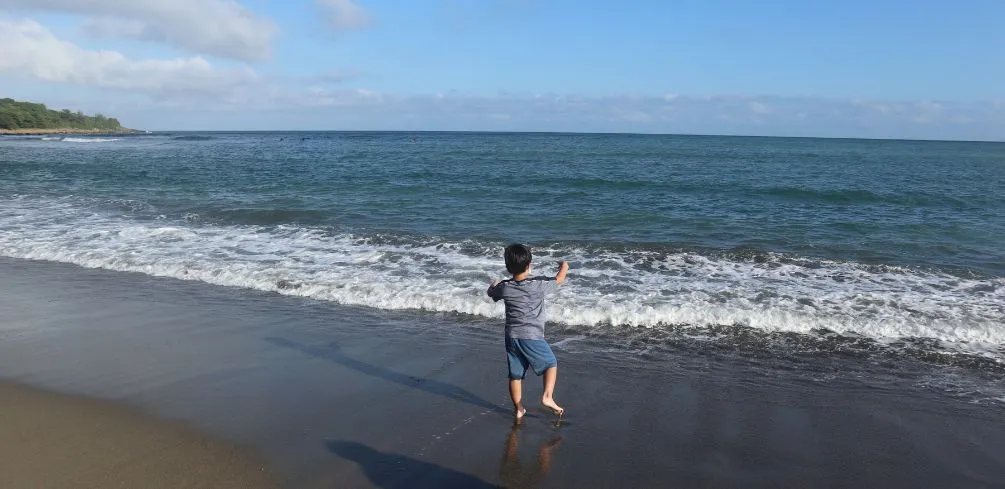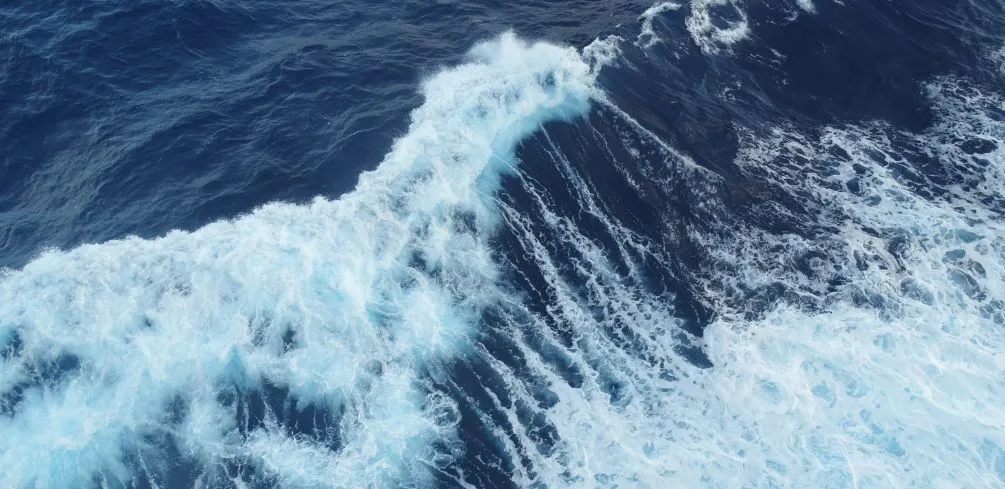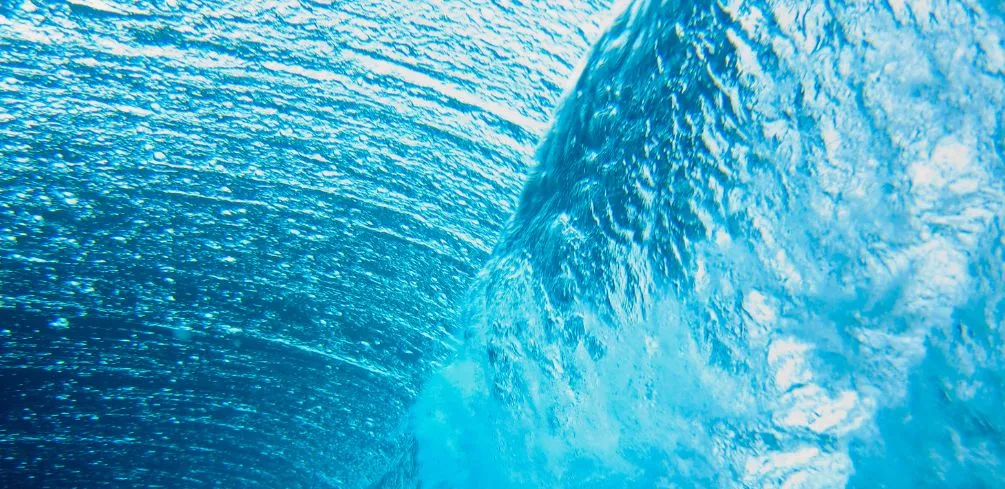Navigating across the ocean can be a daunting prospect for even the most experienced sailors. It’s no surprise then that many turn to ocean currents for help – but these powerful forces of nature can be unpredictable and sometimes difficult to understand.
In this article, I’m going to take a deep dive into how different ocean currents affect navigation, so you can make the most of them when you’re out on the open seas.
You may have heard of some of the world’s biggest ocean currents, such as the Gulf Stream and Kuroshio Current, but did you know they actually play an important role in navigation? From providing speed boosts to helping with fuel efficiency, understanding how different ocean currents work is essential for any sailor wanting to get from point A to point B safely.
This article will provide an overview of what ocean currents are and how they affect navigation. We’ll look at which types are best for sailing and how you can use them to your advantage. So if you’re looking to up your navigation game, buckle up – because it’s time to learn all about navigating with ocean currents!
Definition Of Ocean Currents
Ocean currents are the large-scale movements of seawater in oceans and seas. They play a crucial role in regulating our planet’s climate, as well as affecting navigation and fishing.
Understanding the ocean’s current definition is essential for sailors to be able to plan their voyages and make informed decisions about safety. There are two main types of ocean currents: surface currents and deep ocean currents.
Surface currents are the most visible type of ocean current, moving along the upper layers of the world’s oceans. These currents can be driven by prevailing winds, temperature differences, variations in salinity, or changes in continental shelf topography. Examples of surface ocean currents include the Gulf Stream, Kuroshio Current, and Agulhas Current.
The formation of deep ocean currents involves a complex interaction between gravity and density gradients within the water column. This is referred to as thermohaline circulation or ‘deep-water circulation,’ which is driven by differences in temperature (thermo) and salinity (haline).
Deep-water circulation plays an important role in transporting heat around the globe and helps to maintain global temperatures.
No matter what type of current it is, understanding its dynamics is essential for sailing safely across any body of water. With knowledge comes power: if you understand how these powerful forces move beneath you, then you can use them to your advantage when planning your voyage!
Types Of Ocean Currents
Now that we know what ocean currents are let’s explore the different types. There are two main categories of ocean currents: surface and deep water currents. Surface currents are driven by wind and interact with the atmosphere, while deep water currents are driven by density differences in the ocean.
One of the most well-known surface currents is the Gulf Stream, which runs from the Gulf of Mexico up to Cape Hatteras, North Carolina. This current affects navigation as it can create strong winds when ships sail near it. The Kuroshio Current is another powerful current located off the east coast of Japan and Taiwan, transporting warm tropical waters northward along Asia’s coastline.
The Antarctic Circumpolar Current is a deep water current that circles Antarctica, connecting all three major oceans: the Atlantic, Pacific, and Indian Oceans. This current carries cold waters from the south pole and helps to keep Antarctica isolated from warmer areas in other parts of the world.
Another important deep water current is known as the North Atlantic Drift, which moves warm tropical waters northward towards Europe. This current helps to keep northern Europe relatively warm during winter months compared to other parts of the world at similar latitudes.
Navigation of our seas relies heavily on understanding how these various ocean currents interact with one another and how they affect ships’ routes. By familiarizing ourselves with these different types of ocean gyres, sailors can make better decisions on their voyage planning and be prepared for whatever conditions they may encounter during their journey.
Factors Influencing The Strength And Direction Of Currents
Navigation is greatly impacted by ocean currents, as they can either make your journey easier or more difficult. So, it’s important to understand the factors that influence the strength and direction of currents. Temperature plays a major role in shaping ocean currents.
Warmer water is less dense than colder water and will therefore rise to the surface. This creates a current with an upwelling of warm water at the equator and a downwelling of cold water near the poles. Wind direction is also influential in shaping ocean currents.
The wind pushes against the surface of the ocean, creating waves and causing warm and cold layers to mix together. As a result, you may find that different parts of an ocean have different temperatures even if they’re close to each other in proximity.
Finally, salinity levels are another factor that affects current strength and direction – higher salinity levels cause water to be denser than lower salinity levels which means it will sink toward the bottom more easily. All these factors contribute to the complexity of ocean navigation and must be taken into account when planning trips across large bodies of water.
Knowing how temperature, wind direction, water density, and salinity levels affect currents can help sailors gain an advantage while navigating oceans around the world.
Impact Of Ocean Currents On Navigation
Navigation through the ocean is a difficult task and requires a great deal of knowledge, experience, and skill. The effects of ocean currents can have a significant impact on navigation and must be taken into consideration when planning any voyage or route.
Navigators must understand the effects of currents on their vessels so that they can effectively plan for navigation in the face of these conditions. To do this, navigators use current navigation strategies such as course corrections and speed adjustments to ensure that they are able to reach their destination safely.
By understanding how ocean currents can affect their vessel’s speed, direction, and overall progress, navigators are able to create more efficient routes and better prepare for unexpected changes in water conditions.
Safety is paramount when it comes to navigating through the sea. It is important for navigators to be aware of potential dangers posed by ocean currents, both in terms of navigation current effects and overall ocean navigation safety.
Through careful planning and preparedness, navigators are better equipped to handle any risks associated with navigating in areas with strong currents or other potential hazards. By being aware of the potential impacts of ocean currents effects on navigation, navigators can make informed decisions that will help keep them safe while out at sea.
Navigating through the open seas requires a great deal of knowledge and skill, but understanding how different ocean currents affect navigation is an essential part of successful voyages. Knowing how currents can influence your vessel’s speed, direction, and overall progress allows you to plan more efficiently as well as prepare for any unexpected changes in water conditions or other potential hazards you may encounter along your journey.
Strategies For Safe Navigation In Areas With Strong Currents
Sailing through the choppy waters of the open ocean can be a thrilling experience. But with ocean currents, navigating these waters can become dangerous and unpredictable. Whether you are an experienced sailor or just beginning, understanding how to safely navigate in areas with strong currents is essential.
With navigation strategies that account for the strength and direction of ocean currents, sailors will be able to navigate more safely and efficiently. Currents can affect the accuracy of your navigation instruments, so it’s important to understand how they work and what to look out for when sailing in areas with strong currents.
The best way to stay safe while navigating in areas with strong currents is to plan ahead. Before each voyage, make sure you check the forecasts for wind and sea conditions, as well as the strength and direction of local current patterns.
Additionally, always bring extra supplies such as food, water, fuel, and navigational tools just in case something unexpected arises. With these safety measures taken into consideration, it won’t be long before you’re back on course!
Frequently Asked Questions
What Are The Implications Of Ocean Currents On Climate Change?
The implications of ocean currents on climate change are far-reaching. From global warming to ocean circulation, these currents can have a significant impact on our climate and our environment.
As we explore the effects of oceanic currents on climate change, it’s essential to consider the following points:
- Oceanic currents play an important role in transporting heat energy around the globe. This process helps moderate and regulate global temperatures, making it an essential part of Earth’s climate system.
- Changes in ocean circulation can cause changes in weather patterns, leading to extreme weather events such as heat waves and droughts.
- Warmer sea surface temperatures can contribute to higher levels of atmospheric carbon dioxide, resulting in increased global warming and further climate impacts.
- Oceanic currents also have an effect on regional climates, affecting air temperature, precipitation levels, and other local weather phenomena.
These points illustrate just how interconnected our planet is when it comes to climate change; even a seemingly small change in one area of the world can have far-reaching consequences for us all. The effects of oceanic currents on climate change may be complex and nuanced, but it’s clear that they are an integral part of our global climate system and must be taken into account when considering strategies for mitigating its effects.
By understanding more about how different oceanic currents interact with each other and with our atmosphere, we can gain valuable insight into how best to protect our planet from further damage due to global warming and other climate impacts.
How Can Ocean Currents Be Used To Generate Energy?
It’s no secret that the ocean is a powerful force to be reckoned with. But did you know that it can also be used to generate energy? In fact, ocean currents are a great way to generate renewable energy and create a greener future. By harnessing the power of ocean currents, we can produce clean sources of energy such as tidal power and wave power.
Harnessing the power of ocean currents is an incredibly smart move for the environment. Tidal power plants use turbines located in shallow areas near shorelines to capture the kinetic energy of moving water caused by tides. Wave power plants convert wave motion on the surface of oceans into electricity. Both forms of renewable energy are sustainable and have a much lower environmental impact than traditional sources of energy production.
What’s more, tapping into ocean currents as an energy source has many economic benefits as well. Not only does it reduce our dependence on fossil fuels, but it also creates jobs in construction and maintenance for infrastructure specifically designed to capture this type of renewable energy.
With increased investment in technologies like tidal turbines and wave power generators, these jobs can result in long-term economic growth while preserving our precious natural resources at the same time.
In summary, using ocean currents to generate renewable energy is not only good for our environment but also presents an attractive economic opportunity – one that could help us build a greener future for ourselves and generations to come!
How Can Fishermen Utilize Ocean Currents To Their Advantage?
Fishermen have long utilized ocean currents to their advantage in order to maximize their catches and increase the efficiency of their fishing trips. Ocean currents are powerful forces that can be used to transport fishermen to areas where there is an abundance of fish, saving them time and energy.
By understanding how these currents work and where they go, fishermen can take full advantage of them for a successful fishing expedition.
One way fishermen can utilize ocean currents is by using them to locate fish-rich areas. Some species of fish travel along certain currents, so by following them, fishermen can find areas teeming with fish.
Fishermen also use the power of the current to drift with their nets or other gear while they wait for the catch. This method allows fishermen to cover more ground in a shorter amount of time and catch more fish than if they were relying on human strength alone.
Using ocean currents offers numerous advantages to fishermen as it saves them time, energy and resources. With the right knowledge and equipment, fishermen can use these natural forces of nature to increase their catches while making their fishing trips more efficient.
In addition, being aware of oceanic conditions such as wind speed, temperature, and depth helps fishermen plan ahead for a successful trip out at sea. By taking full advantage of the power of ocean currents, fishermen can optimize their catches and make sure every fishing trip is a success.
What Is The Role Of Ocean Currents In The Global Carbon Cycle?
I’m sure you’re wondering what role ocean currents play in the global carbon cycle. As it turns out, they have a huge impact on climate and climate change. Ocean currents are responsible for distributing heat and energy around the world, which is essential for generating the global climate.
They also help to regulate the amount of carbon dioxide in the atmosphere, which has a direct bearing on our planet’s temperature and weather patterns.
The ocean currents act as a conveyer belt of sorts, carrying carbon from one place to another around the world. This helps to maintain a balanced level of carbon in the atmosphere, which is necessary for sustaining life on Earth.
It also helps to reduce extreme weather events such as floods and droughts by ensuring that enough carbon is present in the atmosphere to support plant growth and other ecosystem processes.
In addition to regulating global climate, ocean currents also play an important role in energy generation. The steady flow of water through these currents produces tidal energy, which can be used to generate electricity or even desalinate seawater for drinking and agricultural purposes. This makes them an invaluable source of renewable energy that can help us combat climate change while providing clean, affordable power for people all over the world.
It’s clear that ocean currents are essential components of our planet’s global carbon cycle. Not only do they help maintain balance in our atmosphere, but they also provide us with a valuable source of renewable energy that can be used to mitigate climate change and create sustainable solutions for future generations.
How Can Ocean Currents Be Monitored To Predict Weather Patterns?
It’s amazing how something as seemingly simple as monitoring ocean currents can have far-reaching implications. From predicting weather patterns to understanding the role of ocean currents in climate forecasting, ocean current tracking is essential for navigation and global safety.
Here’s what you should know about ocean current monitoring:
- Ocean current data analysis provides valuable insight into the behavior of water masses.
- Weather pattern prediction is made possible by monitoring ocean currents and analyzing current data.
- Ocean current tracking allows us to make more accurate predictions about changes in the climate.
Navigating the world’s oceans has always been a challenge, but with advancements in technology, we can now get a better understanding of how different ocean currents affect navigation. By using real-time tracking systems and analyzing data from various sources, it is possible to predict weather patterns and forecast climate change with greater accuracy than ever before.
This helps keep travelers safe by allowing them to prepare for potential storms or other changes in weather conditions that could be caused by shifting ocean currents.
Monitoring ocean currents is an important tool for predicting weather patterns and understanding how they influence our planet’s climate. It also provides valuable insight into how different ocean currents affect navigation, helping sailors plan their routes more safely and accurately. So, let’s take advantage of this knowledge and use it to ensure a safe journey on the open seas!
Conclusion
In conclusion, ocean currents have a great impact on the environment. They can be used to generate energy, provide opportunities for fishermen, and help us predict weather patterns.
They also play an important role in the global carbon cycle, making them essential for understanding climate change. As such, we must take care of these unique natural forces so that they can continue to provide us with numerous benefits.
We are all familiar with the phrase ‘the calm before the storm’; this idiom applies perfectly to our relationship with ocean currents. We must use them wisely and treat them with respect if we want to keep enjoying their benefits. Monitoring ocean currents carefully and using our resources responsibly will go a long way in improving our current situation and help us mitigate the effects of climate change.
Ultimately, it is up to us to take advantage of all that ocean currents have to offer while protecting them at the same time. By doing so, we can ensure that future generations will still be able to benefit from these powerful moving forces of nature.
